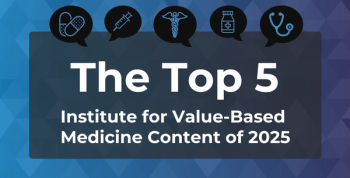
Contributor: 5 Lessons on Health Equity From the Fight Against HIV/AIDS in Africa
Abner Mason, CEO and founder of ConsejoSano, highlights how lessons learned from his early days in the fight against HIV and AIDS in Africa can inform improvements in health equity, especially in light of the COVID-19 pandemic.
Nearly 20 years ago, I headed to Uganda with the goal of controlling the
The few health care facilities were small and ill equipped to handle day-to-day patient encounters, much less a public health disaster. There was no electricity, running water, or roads. As the head of the AIDS Responsibility Project, I was there to rally congressional support for a law that would fund the development of this vital infrastructure.
We succeeded. The Global AIDS Act
Now the US health care system finds itself confronting another crisis. The pandemic’s
How are the HIV/AIDS epidemic and the push for health equity related? The past offers several lessons to health care and policy leaders who aspire to reduce health disparities today.
1. The benefits of health care infrastructure outlast any single crisis
With PEPFAR came the resources to build the infrastructure necessary to combat HIV/AIDS. That meant health care clinics stocked with medical equipment such as centrifuges, but also basic improvements. Workers constructed roads through which people could access the facility, while electricity and clean water upgrades kept the clinic running.
Roads don’t disappear when crises dwindle. The impacts last.
In Uganda, the expanded clinical infrastructure enabled community health workers to deliver care outside the scope of PEPFAR. People had greater access to mental and maternal health services. The construction of roads and other bread-and-butter infrastructure, meanwhile, granted rural communities a chance to address social determinants of health.
2. Incentivizing pharma innovation strengthens the health care system
Without antiretroviral drugs, HIV/AIDS would have remained a more destructive force. Back in the 1980s, the US government began
Pharma gets a lot of heat, some of it deserved, for high drug prices. However, collaboration between the industry and the government advanced innovation and saved lives. Imagine how we could use this model going forward, either for the next health crisis or to better address disparities that exist today.
3. Big goals require coalition building
As chair of the international subcommittee for President George W. Bush’s council on HIV/AIDS, I attended a meeting at the White House that would still turn heads. The room was split between LGBTQ+ activists and evangelical Christians, 2 groups whose policy objectives often clash. In this case, however, everyone aspired to 1 goal: reduce the effects of HIV/AIDS and help underserved communities throughout the world survive the epidemic.
I understand why many people are skeptical of whether a divided nation can come together to solve big challenges, like health disparities. It’s tempting to only see our differences. The push for health equity requires structural changes to how we engage patients, measure success, and pay for this work. No single party or community can make that happen on its own.
4. Stories stoke compassion, and that can change minds and policy
But how did we convince lawmakers that global HIV/AIDS was worth tackling?
When I traveled to the Ugandan bush with the AIDS Responsibility Project, I didn’t go alone. Congressional aides came along and saw firsthand the families who lived in shacks and depended on antiretroviral drugs. These staffers listened to heartbreaking stories of loss and then reported their findings to their bosses, our elected officials.
Back on Capitol Hill, I screened a video for aides and politicians who didn’t make the trip. Their emotional reactions—and Congress’s subsequent votes—showed that powerful stories can incite action. Now, in the United States, lower-income families are going hungry. Communities of color are facing debilitating diseases, including COVID-19, at higher rates and burying their loved ones prematurely. If we are to increase health equity, these stories must be told.
5. To redirect resources, underserved communities need data on their side
In 1983, shortly after the explosion of HIV/AIDS, the CDC began
The United States’ collection of health disparities data is growing, but there are still areas where we lack sufficient race, ethnicity, and language data. For example, the CDC has race and ethnicity data on
By increasing that sort of data collection, we’ll know more about which communities are at risk of which diseases and why. It’s a lesson from the HIV/AIDS crisis that we can’t afford to forget.
Newsletter
Stay ahead of policy, cost, and value—subscribe to AJMC for expert insights at the intersection of clinical care and health economics.







































